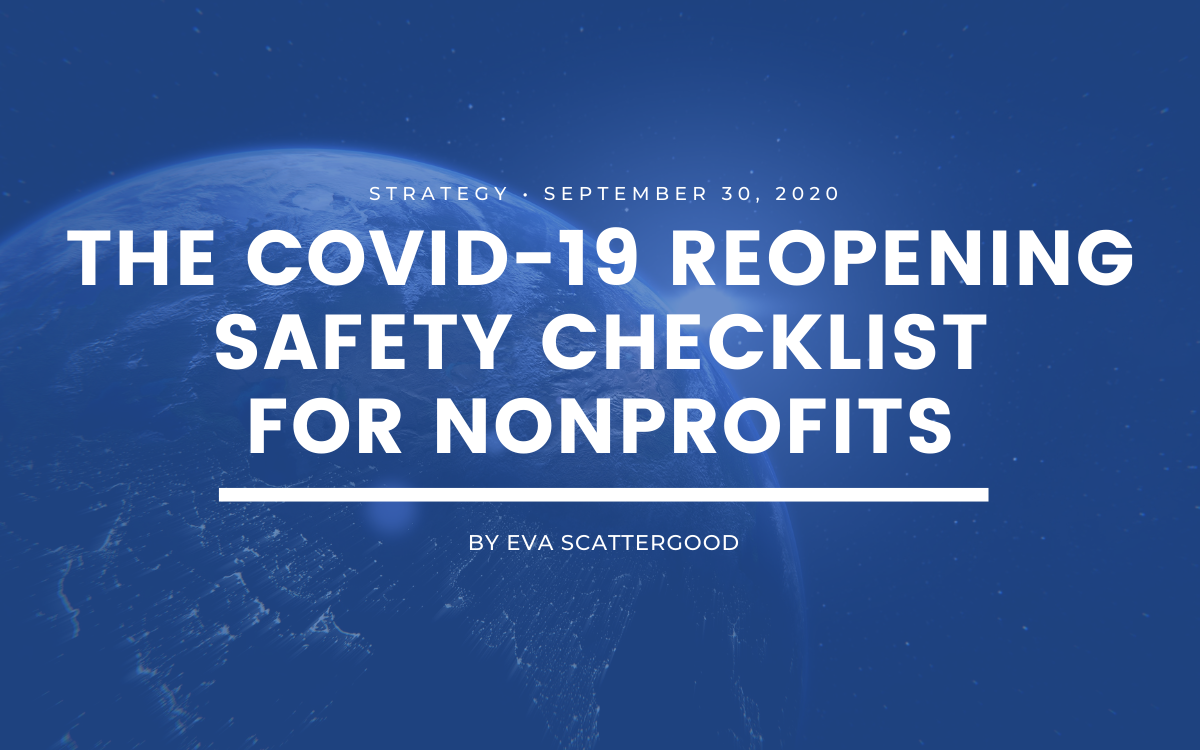The COVID-19 Reopening Safety Checklist for Nonprofits
2 min to read ✭ In this post, you'll learn about how your nonprofit can reopen safely while putting your community at the center.
As the country moves into the final phases of its reopening plans, organizations are scrambling to adopt measures that meet all of the guidelines. Nonprofits–from cultural institutions to health clinics–are probably wondering, how do we reopen safely and with the community at the center? This checklist serves as a clear three-step guide to reopening, outlining the most important steps you need to take to keep people safe and your organization running.
1. Ensure Accordance with Local Rules and Regulations
An absolute must for nonprofits and nonprofit leaders is determining the phased reopening schedule that you have to be in compliance with. In the time of COVID-19, things are ever-changing and it can be hard to keep up!
- Does your municipality require individuals to wear masks in public?
- Is there a cap on the number of people in any given space in order to maintain socially distant from each other?
- What are the rules for sanitization?
- View even more reopening guidelines and helpful tips on the US Chamber of Commerce website which provides helpful information for organizations across the country.
2. Determine How to Conduct Safe Health Screenings
There are a lot of decisions to make and determining how to reopen safely is a big job. Selecting an accurate and easy-to-use solution is paramount to not only opening your organization safely, but for doing your part in protecting the people who are relying on you. Apps such as Fever Free, which provides AI-verified temperature readings, are a solution many nonprofits are using to conduct streamlined and secure temperature and symptom checks while adhering to compliance regulations.
Through the Fever Free app:
- Easily manage thousands of health screenings in minutes with their AI-verified video temperature checks
- Screen for any additional symptoms to catch cases where fevers are not present
- Allow screenings to be completed at home prior to arrival to protect employee privacy and prevent unhealthy individuals from entering
- Healthy individuals gain clearance badges for entry
- Track health check participation for employees and community members
- Ensure data privacy
3. Train and Protect Your Staff and Community
Organizations have a responsibility to keep the community safe. Part of this responsibility is to make sure that your staff is trained and protected. Since everyone’s actions affect their neighbors, friends, family, and fellow community members, it’s important to take into account measures like family checks where you health screen everyone in the household.
You not only can stress the importance of daily health checks, but you can equip your staff with the tools they need to perform them and implement it among the larger community.
- Supply your staff with masks, hand sanitizer, and any other materials to distribute to community members
- Create protocols to equip staff to handle emergency procedures
- Place guidelines that prevent overcrowding or congestion in your space





